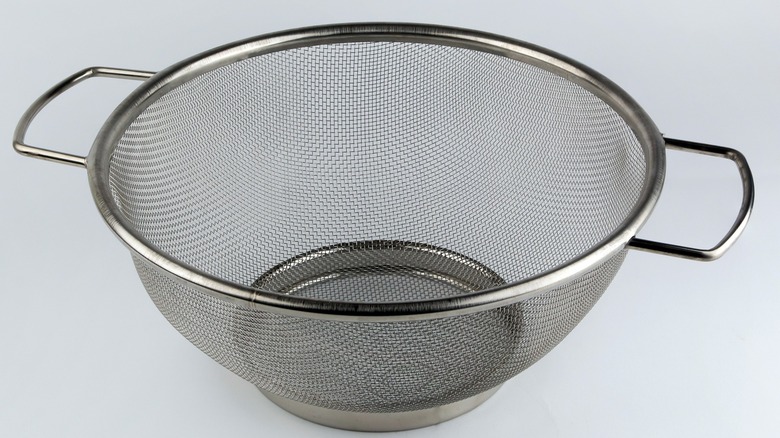Imagine the joy of biting into a hot, freshly made pork bun: The soft, pillowy dough gives way to a succulent and savory meat filling, creating a moment of total bliss. Pork buns – char siu bao – a beloved treat in Asian cuisine, have won the hearts of food lovers worldwide. Yet, for many home cooks, the thought of recreating these magical buns in their own kitchens can feel daunting. Not only is the process quite detailed, but, there’s also the need for a bamboo steamer, an appliance not everyone has on hand. Luckily, there’s a simple kitchen hack that can help you achieve that soft, fluffy texture with nothing more than a common sieve and a pot. It will work on store-bought buns, too, of course.
At first glance, a sieve might not seem much of a substitute for a steamer, but with a little ingenuity, it performs remarkably well. The reason that the everyday kitchen tool you probably use to rinse vegetables or drain pasta can stand in for a steamer comes down to its basic function: allowing steam to pass through.
When placed over a pot of boiling water, the sieve mimics the steaming environment a traditional steamer basket creates. The holes in the meshwork allow steam to circulate freely, ensuring the buns are cooked evenly and thoroughly. This method not only offers a practical solution for those without a steamer but also highlights the versatility of everyday kitchen tools just like with the colander trick.
Transforming a sieve into a steamer

To start, select a pot and a metal sieve that fit together well. The sieve should be large enough to rest snugly on the pot without the risk of it tipping or falling in. Pour some water into the pot, keeping the level low enough so it won’t touch the bottom of the sieve when it’s placed on top. You want the buns to steam not boil. Once your pot of water is on the stove, bring it to a steady boil. Meanwhile, prepare your pork buns for steaming. Next, line the sieve with parchment paper to prevent the buns from sticking to the sieve. Place the buns on the lined sieve, spaced apart to allow for expansion as they cook.
Get ready to place the pot lid over the sieve to fit as tightly as possible, and ensure it’s not touching the buns. But first, to enhance the steaming environment, wrap the lid with a kitchen towel to capture any condensation that forms, preventing water droplets from falling onto the buns and making them soggy. The towel will also help create a sort of airtight seal around the edges of the lid, maximizing the steaming effect. Steam the buns for about 10 minutes, keeping an eye on the water level in the pot, and add more if needed to maintain a steady stream of steam. Once ready, serve the hot buns.






